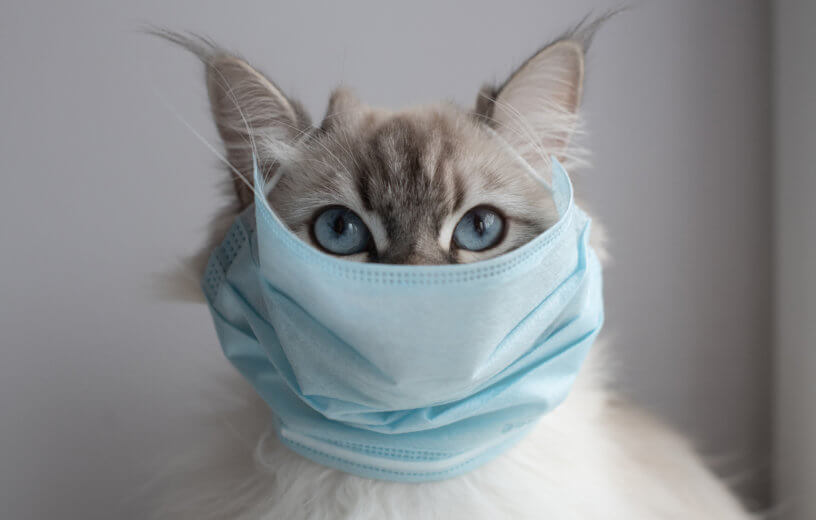ONTARIO, Canada — Pet owners usually want to provide the best life possible for their furry companion, which is why the findings of a new study are sure to upset many a dog and cat owner. Scientists conclude that a large portion of pet cats and dogs are at risk of contracting coronavirus from their owner.
Moreover, the research team says many observed cats or dogs end up exhibiting COVID-19-related respiratory symptoms around the same time symptoms appear in their human owner.
“These preliminary results suggest that a substantial proportion of pets in households of persons with COVID-19 seroconvert,” comments study co-author Dorothee Bienzle, Professor of Veterinary Pathology at the University of Guelph, Ontario, in a release.
Diving deeper into the mystery of COVID in pets
The full depth of the relationship between animals and SARS-CoV-2, the virus that causes COVID-19, is still very much a mystery. We know that many animal varieties are at least capable of contracting SARS-CoV-2, but risk factors, susceptibilities, and trends among specific species is still largely unknown. So, for this research, scientists focused on infection rates and symptoms among dogs and cats (and one ferret!) belonging to a human who tested positive for coronavirus.
Most of those animals belonged to an owner who had tested positive for COVID-19 (or consistent symptoms) within a two-week period, and had a swab taken (one ferret, 17 cats, and 18 dogs). Others’ owners had tested positive at an even earlier date. In such cases, those pets only had a blood sample taken (8 cats, 10 dogs).
Regarding swabs, those pets had their nose, throat, and rectum swabbed for PCR testing (to find current infections). Meanwhile, standard blood antibody ELISA tests were used to search for past infections (via the presence of antibodies). Across both of those testing groups, results were then compared to blood samples taken from different animals in 2019. These older blood samples served as a control group.
COVID antibody tests reveal important findings
The vast majority of the PCR tests came back negative (one cat’s test was “indeterminate”). The blood tests, conversely, reveal the presence of relevant antibodies within four (50%) and three (38%) unique cat samples.
“All cats with an indeterminate PCR or positive antibody result were reported to have had respiratory and/or other illness by their owners around the time of the owner’s COVID-19 infection,” professor Bienzle explains. “Two (20%) of dogs had positive IgG antibody results, indicating past infection, and one of these was reported to have had an episode of respiratory disease. No dogs had positive IgM results, which would have indicated more recent infection.”
“While eligible participant number was limited by relatively low human transmission rates in the study area, these preliminary results suggest that a substantial proportion of pets in households of persons with COVID-19 end up developing antibodies. Due to the narrow window of time available to detect a current infection in pets, especially if their owner is still sick and isolating, blood testing the animal at a later time to check for previous infection is preferable for assessment of human-to-animal transmission,” she adds.
Socially distance with your pets, too
Researchers suggest that if you end up testing positive for COVID-19, it’s a good idea to keep distance from your pet. “There is sufficient evidence from multiple studies, including ours, to recommend that SARS-CoV-2 infected persons should isolate from people and animals,” she advises.
“Transmission from mink to humans has been reported on mink farms with a high proportion of infected animals maintained in close quarters and cared for by humans. Transmission from pets to humans has not been reported, but since the virus changes minimally or not at all after transmission from humans to animals, such reverse transmission may occur,” she concludes.
This research is set to be presented at the ESCMID Conference on Coronavirus Disease.
